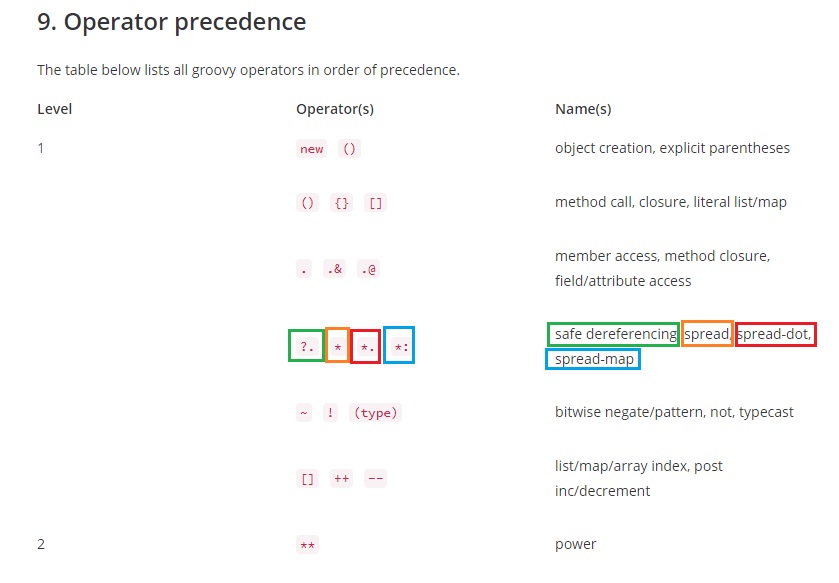You have caused it ... You could simply use Groovy-spread as a name for * instead of spread-operator. The use of "spread operator" is just ambiguous. Many programming languages are using that (mostly incorrectly). For example the ... in Java is varags but it happens that people refers to it as "spread operator". Same happens in JavaScript. In JavaScript, we should use "spread syntax".
After reading your comment about Kotlin (I am not so familiar with it), I figured out that it uses the "spread operator" wording too. I quote from this Kotlin reference
When we call a
vararg-function, we can pass arguments one-by-one, e.g.asList(1, 2, 3), or, if we already have an array and want to pass its contents to the function, we use the spread operator (prefix the array with*):
So keeping the current name "spread operator" is still ambiguous. There may be other uses of "spread operator" in another programming language (the "splat operator" from PHP (denoted as ...) or Ruby (denoted as *) comes in mind).
So, edit the tag name with a more precise naming.
Btw, I just noticed that the spread-operator tag description is not correct.
Please do not use this tag to refer to the spread syntax "..." in JavaScript. Use [spread-syntax] instead. In Groovy, the spread operator (*.) is used to invoke an action on all items of an aggregate object. It is equivalent to calling the action on each item and collecting the result into a ...
That is not correct. *. is a spread-dot operator. The spread operator itself is a simple *. I see that the documentation says something different. However, if you check the operator precedence table, you will see the correct terminology (sorry for being squarey about providing hand-drawn circles)
edit 1: added response to Kotlin comment + my figures about the wording "spread operator" in other languages like PHP/Ruby.
